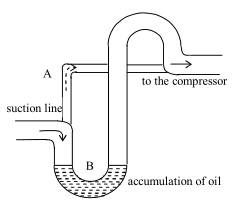One of the most important knowledge that a Marine Engineer has to know is how to prevent and put off...
off fires. Should a big fire occur in a ship, there is almost no other place to go except the surrounding seas.
Tankers carry flammable oils. Engines use fuel oils. Boilers use fuel oils or gas. Gas welding or
cutting repair work uses flammable gases. There is a strong possibility of fire if they are not careful or
vigilant.
To understand how a fire can start, we have to know the concept of the Fire Triangle. A fire can only
start when there is fuel, heat and oxygen. The 3 sides of a triangle represent this fact. If one of these is
absent or removed, the fire does not exist anymore.
So to prevent fires, the best thing to do is to isolate either one of them or better still, all of them, For
example, if a place is hot, it is essential not to keep combustible items there. Designers of diesel engine
should make sure that their high-pressure fuel pipes are located away from the exhaust pipes.
Fuel can be solid or liquid that gives off flammable vapors when heated. It can also be a gas that starts
to burn when its ignition temperature is reached. Examples are paper, wood, cloth, paint, acetylene, and propane gas.
Heat can be transferred by:
Radiation from any heating appliance, flames, or explosion
Conduction through any suitable material such as steel or aluminum
Convection via gases or hot air circulated in ventilation ducts
Oxygen in the air supports combustion. A supply of this gas is essential for a fire to take place.
Sometimes chemical reactions in the fire can give out oxygen that sustains the fire. Oxygen gas used in gas
welding will quicken the spread of the fire.
Fire fighting is therefore the removal of one or two of the ingredients of the fire triangle. When, we
use a water hose to shoot at a fire, we are cooling the fire so as to remove the heat. When we lure off the
gas cylinder valve, we are cutting off the supply of fuel. When we cover up a fire with sand, we are
removing oxygen from the fire.
The fire triangle forms the basis of all the fire protection, fire fighting and training of the staffs on
board ship. Once we understand the fire triangle, prevention and control of the fire situation can be
achieved readily.
参考解析:
1. This passage is mainly about_______
A. the fire protection on board ship
B. the fire fighting on board ship
C. the training of the staffs on board ship
D. the fire triangle
2. Which of the following statements best describes what must be eliminated to extinguish a fire?
A. Any one element can be eliminated to extinguish a fire.
B. Any two elements must be eliminated to properly extinguish a fire.
C. Any three elements must be eliminated to properly extinguish a fire.
D. No element need be eliminated to extinguish any fire.
3. Among the three elements, what is used to sustain combustion?
A. Heat
B. Oxygen
C. Fuel
D. Fire
4. Among the three elements, what is used to raise the temperature?
A. Heat
B. Oxygen
C. Fuel
D. Fire


 百度扫一扫练题
百度扫一扫练题
 关注千题库公众号
关注千题库公众号








